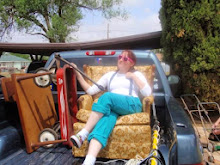I was one of those kids who never read comic books, I have read about two in my entire life and both I enjoyed thoroughly, but I was always told that it didn't actually count as real reading. These two articles have really changed my view on any opinion in that since. I am glad that I read the articles before starting on the books, they kinda were trainers on "how to" approach a graphic novel.
It says in "Expanding Literacies through Graphic Novels" that teachers may encounter issues in trying to teach Graphic novels, and one of the reason they stated was that "graphic novels are not on the state or national tests. Well maybe not directly but I can think of three things just off the top of my head that they would emphasize for students without having to fill out yet another TAKS worksheet.
- Vocabulary: Dr. Kylene Beers states that a comic book ueses 53 rare words for every 1000 words, that is allot when comparing it to a novel which has 52 rare words for every 1,000 words, and television only offers 22 rare words for every 1000. (p. 197 Beers)
- Inferencing: Students have to observe the pictures and decide for themselves what they are supposed to be reading into them. They have to use critical thinking skills as their eyes shift from frame to frame paying attention to the tiniest of details.
- Parts of a story: Students will have to actually think harder to find the plot, seeing they have more sources of media to use (visual/text), and it isn't spelled out as it would be in your average novel.


No comments:
Post a Comment